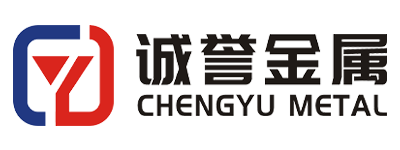The method of using magnets to detect stainless steel has great limitations
Release time:
2025-04-25
1. The magnetism of stainless steel is directly related to its metallographic structure Austenitic stainless steel (such as 304, 316) Theoretically, it is non-magnetic, but in actual production, it may produce weak magnetism due to cold processing (such as stamping, bending) or composition deviation. For example, 304 stainless steel may be magnetic after processing due to the partial conversion of austenite to martensite, but this does not affect its corrosion resistance. Martensitic/ferritic stainless steel (such as 430, 420) It is magnetic in itself and is often used for knives, fasteners, etc., but this type of material still belongs to the category of stainless steel. For example, a 430 stainless steel frying pan can be adsorbed by a magnet, but it is indeed a qualified stainless steel product. 2. Three major misunderstandings of magnet detection False negative risk Non-stainless steel materials such as zinc alloys and copper alloys are also non-magnetic and can be easily misjudged as "high-quality stainless steel". False positive risk Some inferior "stainless iron" (recycled steel demagnetization treatment) may be non-magnetic, but the anti-rust performance is extremely poor. Ignore performance differences Corrosion resistance (such as 316>304>430) has no direct correlation with magnetism. Austenitic stainless steel is still better than magnetic ferritic stainless steel even with weak magnetism. 3. More scientific identification method Professional testing Analyze the chromium and nickel content through a spectrometer (304 needs to contain 18% chromium and 8% nickel). Observe the mark Regular products will be marked with the material (such as SUS304), avoid buying unmarked products. Corrosion test Observe the rust condition by salt spray test or soaking in acidic solution (such as lemon juice).
1. The magnetism of stainless steel is directly related to its metallographic structure
Austenitic stainless steel (such as 304, 316)
Theoretically, it is non-magnetic, but in actual production, it may produce weak magnetism due to cold processing (such as stamping, bending) or composition deviation. For example, 304 stainless steel may be magnetic after processing due to the partial conversion of austenite to martensite, but this does not affect its corrosion resistance.
Martensitic/ferritic stainless steel (such as 430, 420)
It is magnetic in itself and is often used for knives, fasteners, etc., but this type of material still belongs to the category of stainless steel. For example, a 430 stainless steel frying pan can be adsorbed by a magnet, but it is indeed a qualified stainless steel product.
2. Three major misunderstandings of magnet detection
False negative risk
Non-stainless steel materials such as zinc alloys and copper alloys are also non-magnetic and can be easily misjudged as "high-quality stainless steel".
False positive risk
Some inferior "stainless iron" (recycled steel demagnetization treatment) may be non-magnetic, but the anti-rust performance is extremely poor.
Ignore performance differences
Corrosion resistance (such as 316>304>430) has no direct correlation with magnetism. Austenitic stainless steel is still better than magnetic ferritic stainless steel even with weak magnetism.
3. More scientific identification method Professional testing
Analyze the chromium and nickel content through a spectrometer (304 needs to contain 18% chromium and 8% nickel).
Observe the mark
Regular products will be marked with the material (such as SUS304), avoid buying unmarked products.
Corrosion test
Observe the rust condition by salt spray test or soaking in acidic solution (such as lemon juice).
Latest News
The method of using magnets to detect stainless steel has great limitations
1. The magnetism of stainless steel is directly related to its metallographic structure Austenitic stainless steel (such as 304, 316) Theoretically, it is non-magnetic, but in actual production, it may produce weak magnetism due to cold processing (such as stamping, bending) or composition deviation. For example, 304 stainless steel may be magnetic after processing due to the partial conversion of austenite to martensite, but this does not affect its corrosion resistance. Martensitic/ferritic stainless steel (such as 430, 420) It is magnetic in itself and is often used for knives, fasteners, etc., but this type of material still belongs to the category of stainless steel. For example, a 430 stainless steel frying pan can be adsorbed by a magnet, but it is indeed a qualified stainless steel product. 2. Three major misunderstandings of magnet detection False negative risk Non-stainless steel materials such as zinc alloys and copper alloys are also non-magnetic and can be easily misjudged as "high-quality stainless steel". False positive risk Some inferior "stainless iron" (recycled steel demagnetization treatment) may be non-magnetic, but the anti-rust performance is extremely poor. Ignore performance differences Corrosion resistance (such as 316>304>430) has no direct correlation with magnetism. Austenitic stainless steel is still better than magnetic ferritic stainless steel even with weak magnetism. 3. More scientific identification method Professional testing Analyze the chromium and nickel content through a spectrometer (304 needs to contain 18% chromium and 8% nickel). Observe the mark Regular products will be marked with the material (such as SUS304), avoid buying unmarked products. Corrosion test Observe the rust condition by salt spray test or soaking in acidic solution (such as lemon juice).
2025-04-25
1 Preparation before forging (1) Billet selection Select appropriate billets according to the final product shape and performance requirements of stainless steel. Billets can be bars, plates or ingots. For parts with complex shapes, ingots may need to be selected for forging to ensure the uniformity of the material. At the same time, the size of the billet should be considered, and sufficient processing allowance should be left. The allowance generally ranges from a few millimeters to more than ten millimeters, depending on the size and precision requirements of the parts. (2) Heating equipment Stainless steel forging requires appropriate heating equipment. Commonly used ones are resistance furnaces and gas furnaces. Resistance furnaces have accurate heating temperature control and high thermal efficiency, which can make the stainless steel billet heated evenly. Gas furnaces have fast heating speed, but the temperature control is relatively complicated. Control of heating temperature is crucial for stainless steel forging, because different types of stainless steel have different starting and ending forging temperature ranges. For example, the starting forging temperature of austenitic stainless steel is generally around 1150-1200℃, and the ending forging temperature is not less than 900℃. 2 Forging process (1) Forging methods It includes free forging and die forging. Free forging is highly flexible and is suitable for small-batch production of single pieces or large parts with simple shapes. Forging workers gradually shape the blank by operating forging tools such as air hammers and steam-air hammers. Die forging uses a die to shape the blank, which has high production efficiency and is suitable for mass production of parts with complex shapes and high dimensional accuracy requirements. For example, stainless steel connecting rods for automobile engines are usually produced by die forging. (2) Selection of forging ratio The forging ratio is an indicator of the degr
2025-04-25
Parameter Range Typical value Substrate thickness 0.3~1.2mm 0.5mm Alu-zinc coating weight 60~150g/m² (double-sided) 90g/m² Coating total thickness 20~35μm (double-sided) 25μm Board width 600~1250mm 1000mm Roll weight 3~10 tons 5 tons 2. Application areas Architecture: roofs, walls, curtain walls (such as airports and gymnasiums). Home appliances: refrigerator panels, air conditioner shells, oven liner. Transportation: compartment partitions, container shells. Furniture: office partitions, cabinet door panels. 3. Differences from PPGI and PPGL Type Substrate Features Main uses PPGI Galvanized sheet (GI) Low cost, weak corrosion resistance Ordinary buildings, home appliances PPGL Alu-zinc (GL) Excellent corrosion resistance/heat resistance, long life High-end buildings, industrial environments PPAL Aluminum-coated sheet (AL) High temperature resistance (up to 650°C), good reflectivity Chimneys, ovens 4. Purchase considerations Coating type: PVDF for outdoor use, polyester for indoor use. Coating weight: ≥90g/m² is recommended for coastal/industrial areas. Environmental protection standards: Confirm that there is no chromium treatment (RoHS compliant). Surface texture: Embossing, matte and other processes affect the appearance and stain resistance. PPGI has dual protection through substrate + coating, combining functionality and aesthetics, and is an ideal material to replace traditional spraying
2025-04-18
PPGI steel (aluminum-zinc coated steel sheet)
PPGI (Pre-Painted Galvalume Steel Coil/Sheet) is a pre-painted aluminum-zinc coated steel sheet, which combines the corrosion resistance of the aluminum-zinc coated substrate and the decorative/protective performance of the color coating. It is widely used in construction, home appliances and other fields. The following are its key knowledge points: 1. Substrate material: Galvalume (aluminum-zinc coated) PPGI's metal substrate is aluminum-zinc coated steel sheet (55% aluminum, 43.4% zinc, 1.6% silicon), and its performance is better than ordinary galvanized sheet (GI): Corrosion resistance: The corrosion resistance of aluminum-zinc coated steel is 2 to 6 times that of galvanized sheet (especially in high temperature and high humidity environments). Heat resistance: It can withstand high temperatures of 300°C for a long time (galvanized sheet is only about 200°C). Reflectivity: The aluminum layer reflects ultraviolet rays and delays the aging of the coating. 2. Coating structure (five-layer composite) Primer (epoxy resin/polyester) 5~10μm Topcoat (PVDF/polyester/SMP) 15~25μm Chemical conversion layer (chromate/chrome-free) 0.1~0.5μm Alu-zinc coating (Galvalume) 20~150g/m² Rolled steel substrate 0.3~1.2mm Coating type comparison: PVDF (fluorocarbon): super weather-resistant (more than 20 years), UV-resistant, used for high-end building curtain walls. Polyester (PE): low cost, rich colors, suitable for home appliances and interior decoration. SMP (silicon-modified polyester): weather resistance is between PVDF and PE. 3. Core performance indicators Corrosion resistance: Salt spray test (alu-zinc coating substrate): ≥1000 hours (red rust appearance time). The scratch expansion width of the color-coated plate is ≤2mm (ASTM D1654). Adhesion: Cross-hatch test level 0 (no peeling). Hardness: Pencil hardness ≥ H (PVDF coating can reach 2H). Temperature resistance: -40°C~120°C without cracking.
2025-04-18
IBR Steel Roofing Sheet - Overview, Specifications & Standards
IBR (Inverted Box Rib) is a popular profiled steel roofing sheet known for its strength, water resistance, and aesthetic appeal. It is widely used in industrial, commercial, and residential roofing applications. 1. Key Features of IBR Steel Roofing Sheets Strong & Durable: High load-bearing capacity due to its ribbed design. Waterproof: Overlapping ribs prevent water leakage. Lightweight: Easy to transport and install. Aesthetic Appeal: Clean, modern look with straight lines. Available in Different Coatings: Galvanized, Galvalume (Zn-Al), or color-coated (PPGI). 2. Common Materials & Coatings Galvanized IBR: Zinc-coated (GI) for corrosion resistance. Used in budget roofing, sheds, and warehouses. Galvalume IBR: 55% Al-Zn alloy coating (better corrosion resistance than GI). Ideal for coastal areas and industrial roofs. Pre-Painted (PPGI): Color-coated over GI or Galvalume. Used for architectural roofs and modern buildings. 3. Standard Dimensions & Thickness Width: Typically 750mm to 900mm (effective coverage after overlap: ~686mm). Length: Custom-cut, usually between 2m and 12m. Thickness: Ranges from 0.25mm to 0.70mm (common thicknesses: 0.35mm–0.50mm). Rib Height: Between 16mm and 28mm. Pitch (Rib Spacing): Approximately 200mm. 4. Standards & Certifications ISO 9001: Quality management certification. SANS 10162: South African standard for roofing. ASTM A792/A792M: Standard for Galvalume-coated steel. BS EN 10169: Standard for continuously organic-coated steel. 5. Advantages Over Other Profiles (Corrugated, Trapezoidal) Better Water Runoff: Deep ribs prevent leakage. Higher Strength: Can span longer distances without sagging. More Aesthetic: Cleaner lines compared to corrugated sheets. 6. Common Applications Industrial Roofing: Factories, warehouses. Residential Roofing: Modern houses, extensions. Agricultural Buildings: Barns, storage sheds. Commercial Structures: Carports, shopping centers.
2025-04-11
Main classification of galvanized steel wire
Galvanized steel wire can be divided into many types according to different classification standards. The following is a common classification method: 1. Classification by galvanizing process Hot-dip galvanized steel wire Features: The steel wire is immersed in molten zinc liquid to form a thicker galvanized layer. Usually the thickness of the zinc layer can reach more than 50μm. It has excellent corrosion resistance and long service life. Application: Suitable for outdoor, humid, and highly corrosive environments, such as buildings, bridges, electricity, agricultural fences, etc. Electro-galvanized steel wire Features: The zinc layer is deposited on the surface of the steel wire through an electrolytic process. The zinc layer is thin (usually 5-25μm) and the corrosion resistance is relatively weak, but the appearance is smooth and the cost is low. Application: Suitable for indoor, dry or mildly corrosive environments, such as furniture, decoration, electronic products, etc. Mechanical galvanized steel wire Features: Zinc powder is attached to the surface of the steel wire by physical methods to form a galvanized layer. The thickness and corrosion resistance of the zinc layer are between hot-dip galvanizing and electro-galvanizing. Application: Suitable for scenes with medium corrosion resistance requirements and cost sensitivity. 2. Classification by material Low carbon steel galvanized wire Features: low carbon content (usually ≤0.25%), good flexibility, easy processing, moderate strength. Application: widely used in construction, agriculture, daily necessities and other fields. Medium and high carbon steel galvanized wire Features: high carbon content (0.25%-0.6%), high strength and hardness, but relatively low toughness. Application: suitable for scenes requiring high strength, such as prestressed concrete, bridge cables, etc. Alloy steel galvanized wire Features: alloy elements (such as chromium, nickel, molybdenum, etc.) are added to the steel wire to improve strength, wear resistance and corrosion resistance. Application: used in special environments such as marine engineering, chemical equipment, etc. 3. Classification by use Galvanized steel wire for construction Features: strength and corrosion resistance meet construction requirements, usually low carbon steel galvanized wire. Application: used for steel bar binding, concrete reinforcement, building fences, etc. Galvanized steel wire for agriculture Features: good flexibility, strong corrosion resistance, suitable for outdoor environment. Application: used for grape racks, greenhouses, livestock fences, etc. Galvanized steel wire for industry Features: select materials and galvanizing process according to specific needs, with high strength and corrosion resistance requirements. Application: used for cable armor, wire rope, spring, filter screen, etc. Galvanized steel wire for decoration Features: smooth appearance, uniform color, corrosion resistance meets decoration requirements. Application: used for furniture, lamps, crafts, etc. 4. Classification by surface state Glossy galvanized steel wire Features: smooth surface, no additional treatment. Application: suitable for scenes requiring smooth surface, such as weaving, decoration, etc. Scratched galvanized steel wire Features: the surface is scratched or embossed to increase friction. Application: used in scenes requiring anti-slip, such as stair handrails, road guardrails, etc. Plastic coated galvanized steel wire Features: A layer of plastic (such as PVC) is coated on the outside of the galvanized layer to further improve corrosion resistance and insulation. Application: Used for cables, communication cables, etc. 5. Classification by specification Classification by diameter The diameter range is usually 0.2mm-8mm, and steel wires of different diameters are suitable for different scenarios. For example, fine steel wire is used for weaving, and thick steel wire is used for building reinforcement. Classification by strength grade According to the tensile strength grade, such as 1570MPa, 1670MPa, 1770MPa, etc., it is suitable for scenarios with different strength requirements. 6. Special type galvanized steel wire Stainless steel galvanized steel wire Features: Galvanized on the basis of stainless steel, it has both the corrosion resistance of stainless steel and the protective effect of the galvanized layer. Application: Used in highly corrosive environments, such as marine engineering, chemical equipment, etc. Aluminum-zinc alloy coated steel wire Features: The coating is aluminum-zinc alloy, and the corrosion resistance is better than pure zinc coating. Application: Used in scenes exposed to harsh environments for a long time, such as outdoor billboards, power towers, etc.
2025-04-11




